4/13: All hail the 413 Max Wedge
Imagine this: It’s the ’60s, a fresh decade of optimism, and new competition across Detroit has you designing the successor to your employer’s hemispherical V-8, which was once ground-breaking but now is limited by displacement. What’s your solution?
Chrysler introduced the Wedge in 1958 to counter pressure from Pontiac, Ford and Chevrolet, and this engine departed from the Pentastar brand’s notorious family of Hemis. The major change was in the shape of the combustion chamber, which dumped the Hemi’s salad bowl chambers and splayed valves (along with the associated pair of rocker shafts for each head) for what we now would call a more “conventional,” wedge-shaped combustion chamber with the intake and exhaust valves arranged in a line.
This new cylinder head design substantially reduced cost thanks to a number of resulting changes: the combustion chamber could be created when the head was cast at the foundry with only a bit of touch-up needed for the valves, unliked the wholly machined domes of the Hemi that were carved out of blank heads. In addition, the Wedge’s single-shaft valvetrain reduced the engine’s width considerably. Above all else, though, the smaller combustion chambers, when combined with flat-top pistons, squeezed out massive compression ratios—especially when it came to today’s engine: the 413 Max Wedge.
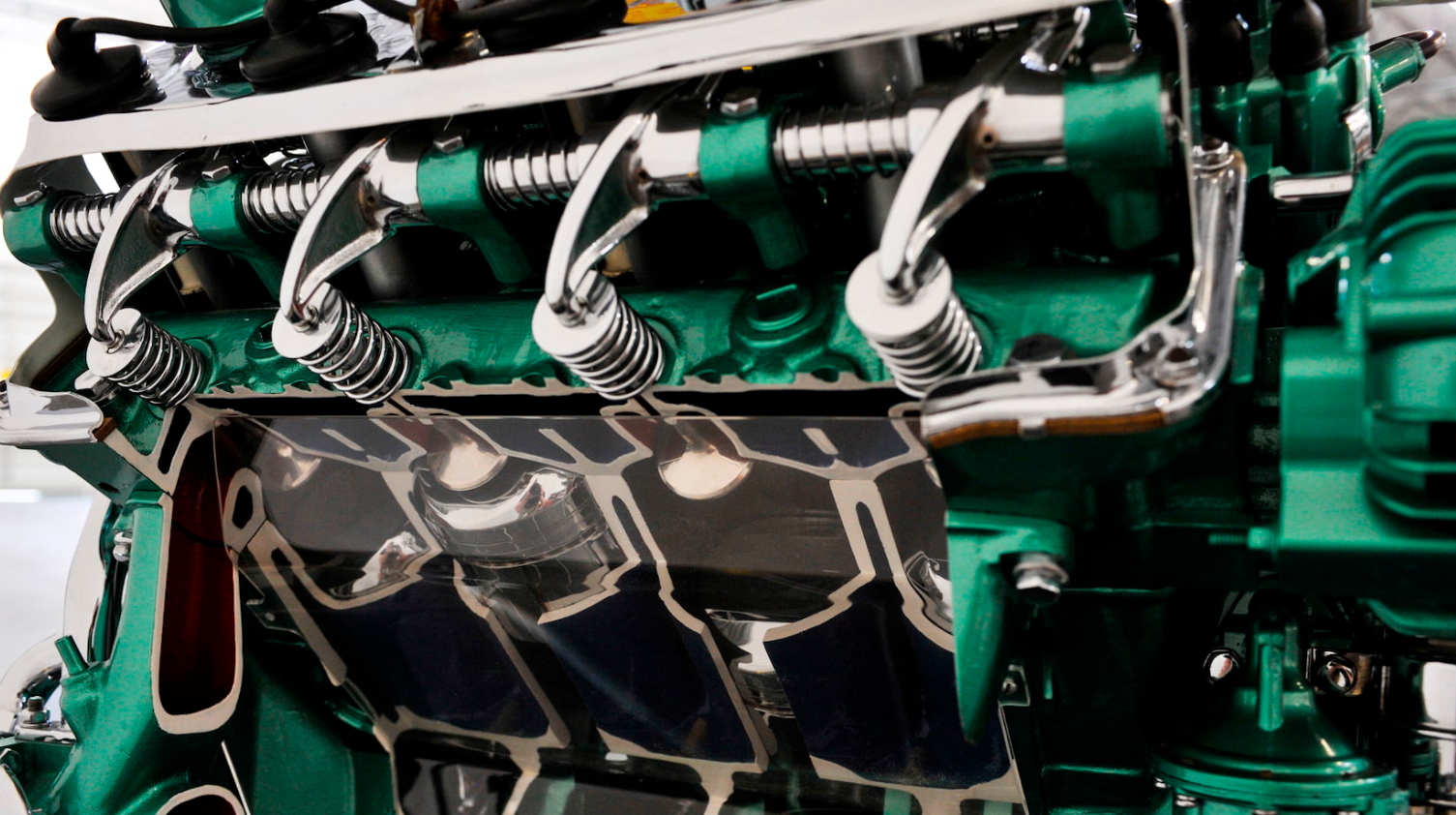
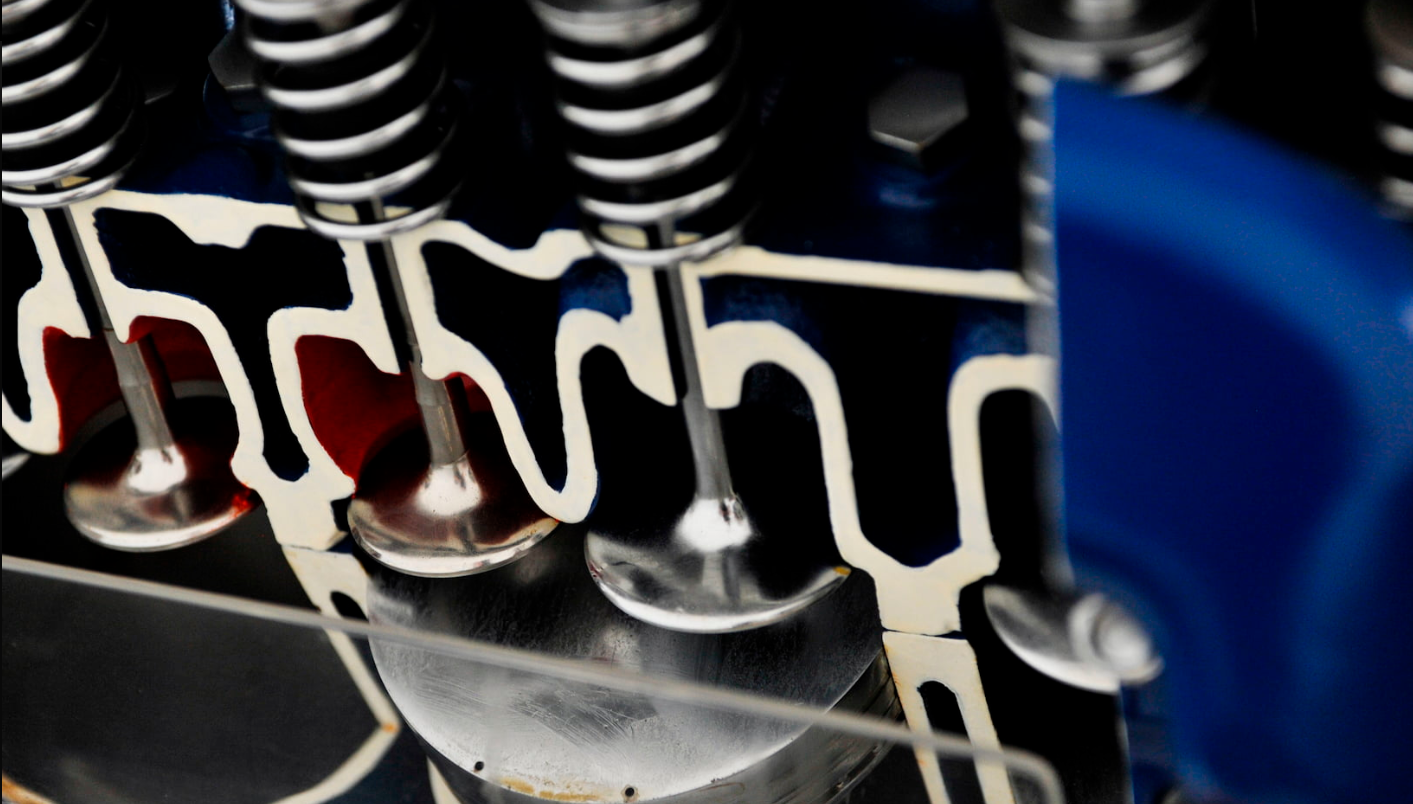
The post-war wonder that was the first-generation of hemispherical-headed engines was outgunned by the likes of the Super Duty Pontiac 421 and Chevrolet 409. Chrysler’s new line of big-blocks was made to answer the big-inch destroyers it sought in racing while simultaneously fitting between the fenders of Chrysler’s lighter “intermediate” cars.
In 1959, the 413 Wedge came into the picture with its tall-deck RB block. Raised from 9.98 inches to 10.725, the taller deck afforded Chrysler the displacement needed to go toe-to-toe with 409s and 421s in NHRA racing. However, the standard 413 found in the Chrysler family of passenger cars and heavy trucks wasn’t ready for the spotlight just yet.
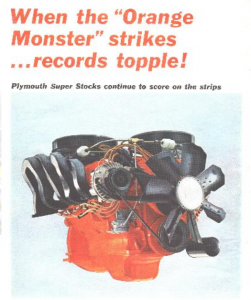
The cross-ram equipped Wedges were known for their robust power numbers, making upwards of 375 hp by 1961. The engine found success in NASCAR racing in particular—thanks to the brutal torque produced by the long-runner, dual-quad intake—but the competition’s street packages soon broke the four-hundred horsepower mark, and it was time for Highland Park’s hot rodders to answer the call.
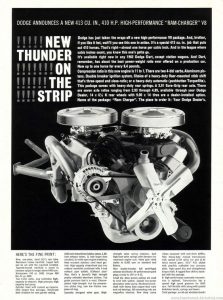
The “Maximum Performance Wedge” was introduced in Dodge and Plymouth models as the Ramcharger 413 and Super Stock 413, respectively. Chrysler distilled the past four years of 413 competition experience into this feisty Wedge, first by taking the massive cross-ram intake and compressing it into short-runner design that improved top-end horsepower; the standard long-runner, in comparison, showed a propensity for low-end torque. Chrysler had experimented with the short-runner design before via an over-the-counter dealer speed part that practically halved the intake ports down to 15 inches in length and paired it with a wild set of upward-swept manifolds that flowed in a tri-Y configuration. Compression skyrocketed with two options: 11:1 and 13.5:1 for 390 hp and 410 hp, respectively, depending on the slugs fitted to the 413’s 4.18-inch bores. A forged crankshaft was used and provided the standard 3.75-inch stroke of the tall-deck RB-series of big-blocks, matched to a set of Magnafluxed-inspected rods to ensure high standards of quality control and durability. A solid-lifter camshaft was paired with dual valve springs to contain the pushrod and rocker assembly at over 6000 rpm, and the heads were heavily ported over their standard brethren.
The brainchild of Tom Hoover and his Ramcharger skunkworks racing team, the 413 Max Wedge became a force to be reckoned with. The new powerplant shattered NHRA Super Stock records and would go on to be the first production-engined machine to break the 12-second barrier with Tom Grove’s “Melrose Missile” 1962 Plymouth Savoy spitting out an 11.93 at 118.57 mph in July of ’62. It wouldn’t necessarily make up for the 409’s ultimate victory that season at the hands of “Dyno” Don Nicholson, but it triggered the laser-beam focus of Mopar’s performance boffins. The following year, the NHRA and NASCAR would clarify their maximum displacement rules, and so Chrysler stretched the bores out to 4.25 inches and found its notorious 426-inch combo. On paper, if you believed the sweet-nothings whispered by contemporary horsepower ratings, the additional displacement gifted the Max Wedge with another 20 or so horses, and was sold as a “race-only” package by dealerships. The new Stage II Max Wedges continued the momentum in NHRA while finding favor at NASCAR’s superspeedways.
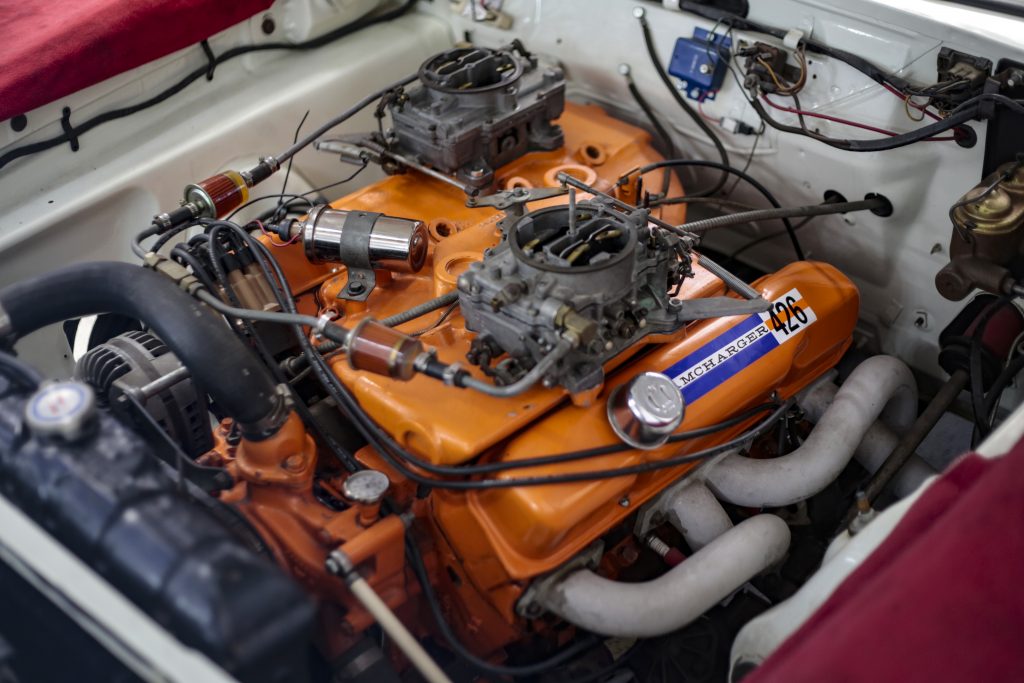
Chrysler would bring back the mammoth hemispherical heads for 1964 at the behest of NASCAR and NHRA teams, who were pushing the big-block platform as hard as possible to keep up with increasing pressure from Ford and GM.
Though it left the limelight, the wedge-headed Mopar big-block was refined in 1965 as the 440 we all know and love with a new, lighter thin-wall block punched out to 4.32 inches. The 413 was, in essence, a flash-in-the-pan for Mopar, but it began the onslaught of performance that peaked with the big-block wing cars at the end of the decade. And besides its Max Wedge watermark, more plebian 413s served in a mixture of luxury sedans and heavy-duty trucks, ensuring that the discerning Wedge-head could have his ramp truck, race car, and Sunday driver powered by the same slice of Mopar brilliance.

